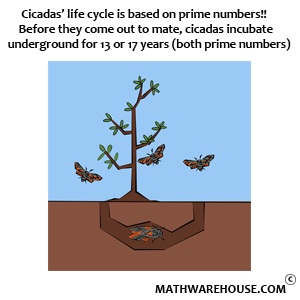Quick Overview
- $$\displaystyle \frac d {dx}\left(\sinh kx\right) = k\cosh kx$$
- $$\displaystyle \frac d {dx}\left(\cosh kx\right) = k\sinh kx$$
- $$\displaystyle \frac d {dx}\left(\tanh kx\right) = k\operatorname{sech}^2 kx$$
- $$\displaystyle \frac d {dx}\left(\coth kx\right) = -k\operatorname{csch}^2 kx$$
- $$\displaystyle \frac d {dx}\left(\operatorname{sech} kx\right) = -k\operatorname{sech} kx\tanh kx$$
- $$\displaystyle \frac d {dx}\left(\operatorname{csch} kx\right) = -k\operatorname{csch} kx\coth kx$$
- Notice that these derivatives are nearly identical to the "normal" trig derivatives. The only exception is the negative signs on the derivatives of the $$\cosh x$$ and $$\operatorname{sech} x$$.
- The trig functions are paired when it comes to differentiation: sinh and cosh, tanh and sech, coth and csch.
- This lesson assumes you are familiar with the $$\blue{Power\hspace{2mm}Rule}$$ , $$\blue{Product\hspace{2mm}Rule}$$, $$\blue{Quotient\hspace{2mm}Rule}$$ and $$\blue{Chain\hspace{2mm}Rule}$$.
Examples
Example 1
Find $$\displaystyle \frac d {dx}\left(\cosh(x^2+9)\right)$$.
Step 1Use the chain rule to differentiate.
$$ \frac d {dx}\left(\cosh(x^2+9)\right) = \sinh(x^2+9)\cdot \frac d {dx}\left(x^2 + 9\right) = \sinh(x^2+9)\cdot 2x = 2x\sinh(x^2+9) $$
Answer$$\displaystyle \frac d {dx}\left(\cosh(x^2+9)\right) = 2x\sinh(x^2+9)$$
Example 2
Suppose $$f(x) = x^4\tanh 3x$$. Find $$f'(x)$$.
Step 1Identify the factors in the function.
$$ f(x) = \blue{x^4}\red{\tan 3x} $$
Step 2Differentiate using the product rule .
$$ \begin{align*}% f'(x) & = \blue{4x^3}\tanh 3x + x^4\cdot \red{3\operatorname{sech}^2 3x}\\ & = 4x^3\tanh 3x + 3x^4\sech^2 3x \end{align*} $$
Step 3Simplify by factoring.
$$ \begin{align*} f'(x) & = 4\blue{x^3}\tanh 3x + 3\blue{x^4}\sech^2 3x\\ & = \blue{x^3}\left(4\tanh 3x + 3x\sech^2 3x\right) \end{align*} $$
Answer$$\displaystyle f'(x) = x^3\left(4\tanh 3x + 3x\sech^2 3x\right)$$.
Example 3
Find $$\displaystyle \frac d {dx}\left(\frac{\sinh 8x}{1 + \sech 8x}\right)$$.
Step 1Differentiate using the quotient rule. The parts in $$\blue{blue}$$ are related to the numerator.
$$ \begin{align*} \frac d {dx}\left(\frac{\sinh 8x}{1 + \sech 8x}\right) & = \frac{(1 + \sech 8x)\cdot\blue{8\cosh 8x} - \blue{\sinh 8x}\cdot (-8)\sech 8x\tanh 8x}{(1 + \sech 8x)^2} \end{align*} $$
Step 2Simplify the numerator.
$$ \begin{align*} \frac d {dx}\left(\frac{\sinh 8x}{1 + \sech 8x}\right) & = \frac{(1 + \sech 8x)\cdot \blue 8\cosh 8x - \sinh 8x\cdot \blue{(-8)}\sech 8x\tanh 8x}{(1 + \sech 8x)^2}\\[6pt] & = \frac{\blue 8(1 + \red{\sech 8x})\cdot \cosh 8x + \blue 8 \sinh 8x\cdot \red{\sech 8x}\tanh 8x}{(1 + \sech 8x)^2}\\[6pt] & = \frac{\blue 8\left(1 + \red{ \frac 1 {\cosh 8x}}\right)\cdot \cosh 8x + \blue 8\sinh 8x\cdot\red{\frac 1 {\cosh 8x}}\,\tanh 8x}{(1 + \sech 8x)^2}\\[6pt] & = \frac{\blue 8\left(\cosh 8x + 1\right) + \blue 8\cdot\frac{\sinh 8x}{\cosh 8x}\cdot\tanh 8x}{(1 + \sech 8x)^2}\\[6pt] & = \frac{\blue 8\left(\cosh 8x + 1\right) + \blue 8\cdot\tanh 8x\cdot\tanh 8x}{(1 + \sech 8x)^2}\\[6pt] & = \frac{\blue 8\left(\cosh 8x + 1 + \tanh^2 8x\right)}{(1 + \sech 8x)^2} \end{align*} $$
Answer$$\displaystyle \frac d {dx}\left(\frac{\sinh 8x}{1 + \sech 8x}\right) = \frac{8\left(\tanh^2 8x + \cosh 8x + 1\right)}{(1 + \sech 8x)^2}$$
Example 4
Suppose $$f(x) = \coth^5 11x$$. Find $$f'(x)$$.
Step 1Rewrite the function to emphasize that the cotangent is being raised to the fifth power.
$$ f(x) = \left(\coth 11x\right)^5 $$
Step 2Differentiate using the chain rule.
$$ \begin{align*} f'(x) & = 5\left(\coth 11x\right)^4\cdot \frac d {dx}\left(\coth 11x\right)\\[6pt] & = 5\left(\coth 11x\right)^4\cdot (-11\csch^2 11x)\\[6pt] & = -55\left(\coth 11x\right)^4\cdot \csch^2 11x \end{align*} $$
Answer$$\displaystyle f'(x) = -55\left(\coth 11x\right)^4\cdot \csch^2 11x$$.


















